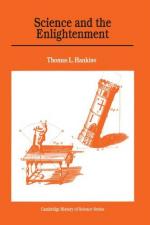
|
| Name: _________________________ | Period: ___________________ |
This quiz consists of 5 multiple choice and 5 short answer questions through Chapter 3, Experimental Physics.
Multiple Choice Questions
1. According to Chapter 3, ________ was the most volatile and least substantial of all the elements; therefore, it was the chief agent of change, as witnessed by its role in combustion, fermentation, decomposition, and evaporation.
(a) Wind.
(b) Air.
(c) Fire.
(d) Water.
2. In a letter of September 21, 1781, who wrote to his mentor Jean d'Alembert that he feared mathematics had reached its limit?
(a) Joseph-Louis Lagrange.
(b) Sylvestre-Francois Lacroix.
(c) Diderot.
(d) Bernard Fontenelle.
3. Who was the extraordinary philosopher whose life and career exemplified many aspects of the Enlightenment, although he was not especially prominent as a natural philosopher nor was he the main protagonist in the vis viva controversy?
(a) Chatelet.
(b) Bernoulli.
(c) Voltaire.
(d) Gabrielle de Breteuil.
4. In the preface to his "Histoire" of the Paris Academy of Science, who argued in 1699 that the new "geometric spirit" could also improve works on politics, morals, literary criticism, and even public speaking?
(a) Varignon.
(b) Newton.
(c) Leibniz.
(d) Fontenelle.
5. All of the following were forms of fire, according to Boerhaave and Musschenbroek, except for which one?
(a) Light.
(b) Heat.
(c) Electricity.
(d) Wood.
Short Answer Questions
1. In 1729, ________, a dedicated amateur experimenter and occasional contributor to the "Philosophical Transactions" of the Royal Society, discovered that electricity could be communicated over rather long distances by contact.
2. Newton had not made it clear whether the forces acting between the planets and between the parts of matter acted at a distance or through some intervening medium called a(n) ________.
3. The names "biology" and "sociology" were names and fields that were created in what century, according to the narrator in Chapter 1?
4. What was the name of the philosopher who carried out the following experiments: kite, electric spider, and lightning bells to study electricity?
5. Which German metaphysician, when asked in 1785 if he believed he lived in an enlightened age, answered, "No, we are living in an age of enlightenment."
|
This section contains 320 words (approx. 2 pages at 300 words per page) |

|




